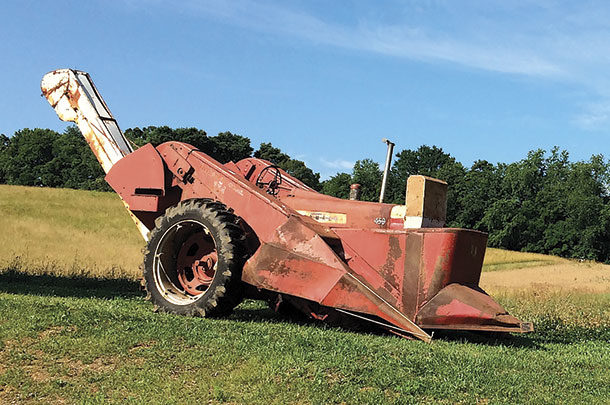As shown in the photo, my machine isn’t very beautiful, but I see a piece of equipment that seems to have held up fairly well over the years. Everything is fully functional, which is very impressive at this time in its life. I like to use my equipment in their “work clothes,” like they looked when the last farmer used it or even its original owner.
The best I can tell, the 450 has never been repainted, and neither has the picker. I thought the combination of the two would work out great, and so far it has definitely been a nice union.
On a Sunday afternoon about three years ago, a tractor buddy and I headed to New Market, Tennessee, to look at some Super M-TA Farmalls a collector had for sale. I wasn’t prepared for the enormity of the collection of IH “stuff” I was about to encounter.
We looked through several buildings full of everything IH, from a Farmall M with mounted cotton picker to an IH Autowagon. The last building we came to had some larger equipment and implements. There sat the 234 corn picker, and I knew this was my chance.
It was quite a chore to get the thing loaded with it just sitting on the ground in a shed. But, long story short, we finally got it loaded without tearing up too much, and I will never move it again unless it’s mounted on something.
Some folks say the 234 picker is one of the finest corn pickers ever made. I’m sure there are those who would disagree, and by the time we finally finished mounting it on the 450 I wasn’t a very big fan myself (but I got over it).
For starters, there had never been a fast hitch on the 450, so I bought one from the guy who sold me the picker. Then the axle mounting brackets that came with the picker were not the correct ones for the 450, and the power take-off coupling plates were missing.
I then began the thrilling and exhausting hunt through the parts book and internet to get the part numbers for all the correct parts I was missing.
I finally found everything and decided the 450 Farmall was the best fit for the 234, especially since the 450 is equipped with the torque amplifier – and once it was mounted, that’s where it was going to stay. I can say this: If the time ever does come to take it off of the 450, it will happen on a perfectly level, very solid parking spot to ease the issues associated with re-mounting.
This 234 picker spent some of its life at Middle Tennessee State University’s ag department. It still has the school’s property tag on the side. I was able to contact the farm director there to find they had it mounted on a 504 Farmall. It was used into the late 1980s until the engine finally blew in the tractor and they traded it for an F2 Gleaner, their second combine. I think it’s pretty cool to be able to trace back (at least part of) the history of these old machines.
According to the parts book, there were bracket kits available so the picker would work on other makes of tractors. The machine is versatile and would work on different IH models as well but required different mounting brackets and hardware. There were also different attachments for the picker itself, such as a sheller unit.
I particularly like the air snoot on the front of the tractor, which helps keep trash, dust and foreign objects from getting into the radiator and possibly overheating. The “M&W Super Snoot” was popular, but the one I found is a new old-stock IH with the radiator shroud and everything in one piece with the top painted white and the sides red.
The tractor club I belong to grows a small field of corn every year, and we have been using the 450/234 combo to pick it for the past few years. We usually don’t end up with much corn, as the deer population is much greater than the stand of corn we get, but it gives us a chance to play around with the equipment.
Recently, we were getting ready to pick this year’s crop (airing up the tires, checking fluids and lubing) when the elevator wouldn’t engage and we discovered an unexpected surprise.
A generous squirrel or some other critter had built a nest in the bottom of the elevator and had it completely jammed to the point the chain was about to come off the drive gear.
I guess this should be expected when a piece of equipment is only cranked a few times a year, and the picker is only used once a year. This year, when we were finished we left the inspection plate off so we don’t have the same problem next year.
There are always lessons to be learned when dealing with these classic machines. ![]()
PHOTO: A 450 Farmall is hitched to a 234 International Harvester corn picker. This working machine combo is fully functional. Photo by Lance Phillips.











